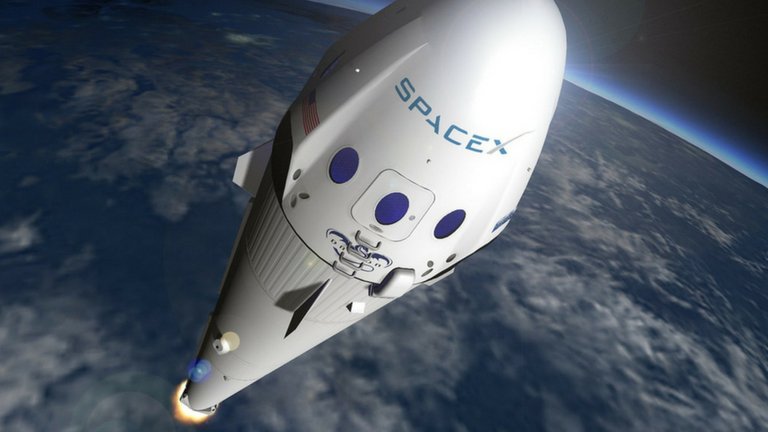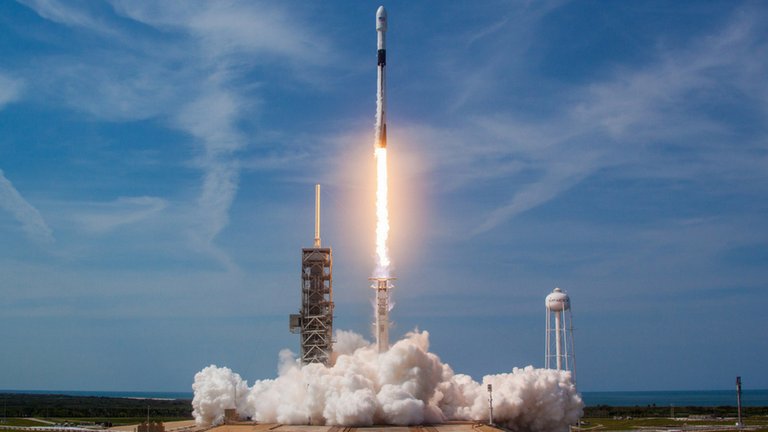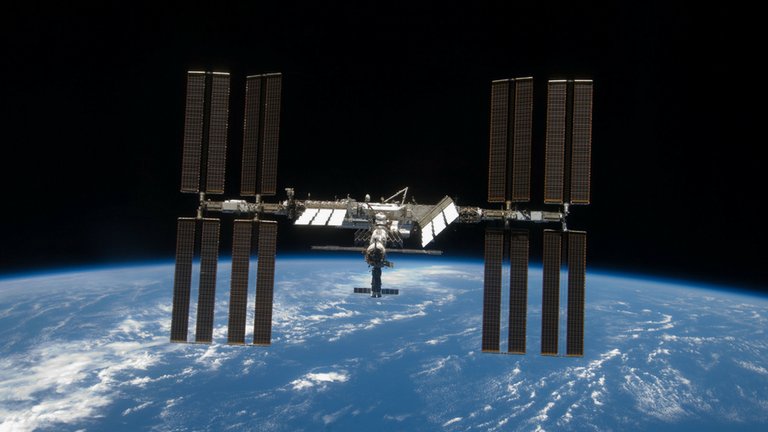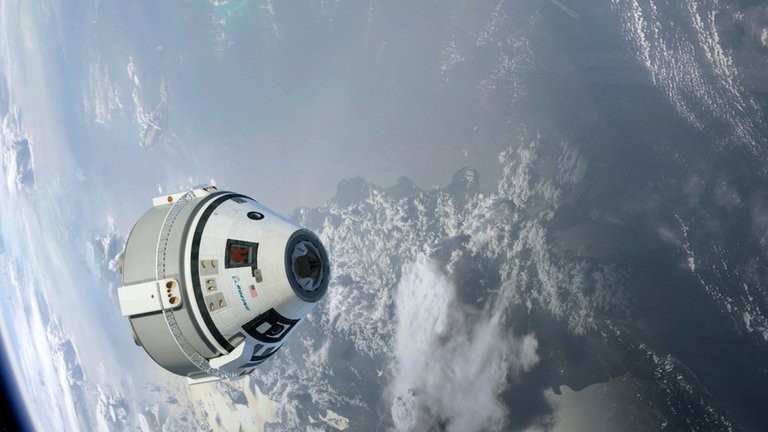Elon Musk's company is working on building rockets that are more powerful, and more reusable, than ever.

Main image: SpaceX is working on the most powerful rocket ever, the Big Falcon Rocket, for trips to Mars. Credit: SpaceX
When Elon Musk's SpaceX first launched its Falcon 9 rocket back in 2010 it was thought of as a novelty venture by a tech entrepreneur that would be little more than a tech demonstration. No one thought it would become the de facto rocket for getting satellites, and even people, into orbit.
Exactly 54 launches later, SpaceX has become famous the world over for its reusable rockets, with their discarded boosters landing dramatically back on their launch pad, or on drone-ships offshore. So far about 20 first-stage boosters, complete with engines and fuel tanks, have been recovered.

The Falcon 9 Block 5 is designed to be the most reliable and reusable rocket ever built. Credit: SpaceX
SpaceX is aiming to both dominate the commercial rocket launch industry, and make space flight more efficient and affordable to further Musk’s interplanetary ambitions. However, one obstacle to these ambitions is that a standard Falcon 9 rocket's boosters can still only be reused twice.
Cue the new SpaceX Block 5 boosters, which can be reused no less than 10 times – and possibly as much as 100 times. They have the potential to change everything.
What is a Falcon 9 Block 5 rocket?
The new Falcon 9 Block 5 is likely the final version of a product that's gradually been improved and developed with the same Silicon Valley mindset that drives advances in consumer electronics. SpaceX strives to constantly improve its rockets, making them more reusable and more powerful, and the Block 5 features a whole host of improvements.
Technically known as a 'two-stage-to-orbit medium-lift launch vehicle', this fifth and final version of the Falcon 9 enables each first-stage booster to be used 10 times, and just as importantly they can be cleaned up and ready to go again within weeks rather than months – in the rocket business, that's revolutionary. However, Musk has said publicly that he thinks that a Block 5 first stage could be able to launch 100 times.
That kind of reusability could, in the long term, make space flight much cheaper. However, perhaps the most important upgrade the Block 5 brings is a new turbopump, which was blamed for a catastrophic failure of a Falcon 9 in 2016.
Why is Falcon 9 Block 5 so important?
In terms of performance and reliability the Falcon 9 Block 5 – a decade in the making – is all about impressing NASA. The new, final Falcon 9 with Block 5 upgrades will likely be used to launch humans into space from US Soil, something that hasn't happened since NASA's Space Shuttle launched for the final time in July 2011.
In theory that could happen in early 2019. "Falcon 9, along with the Dragon spacecraft, was designed from the outset to deliver humans into space, and under an agreement with NASA, SpaceX is actively working toward this goal," says the SpaceX website.

The new Falcon 9 could soon be taking astronauts to the International Space Station. Credit: NASA
As well as manned spaceflight missions, the Block 5 improvements will also allow SpaceX to bid for more contracts from the Pentagon, such as the US$290 million deal it just struck to launch three next-gen Air-Force Global Positioning System (GPS) satellites, dubbed GPS-III. Until now, United Launch Alliance (ULA) – SpaceX’s main US rival in the commercial rocket-launching business – has had the monopoly on such contracts.
Has the Falcon 9 Block 5 flown yet?
It was thought that SpaceX had used its new rocket for the first time on May 11 2018, when SpaceX delivered Bangladeshi telecoms satellite Bangabandhu-1 into orbit from Kennedy Space Center, then landed the booster on SpaceX’s drone-ship in the Atlantic Ocean; however it seems that wasn't quite the finished article.
“Apparently SpaceX hasn’t flown its final Block 5 rocket – it decided after that launch that it’s going to add a final component that the Falcon 9 needs to meet the very stringent requirements for NASA for what’s needed to safely fly NASA astronauts,” says Laura Forczyk at Astralytical, a space research, analysis and consulting firm in the US.
NASA wants SpaceX to install that turbopump, and see the rocket flown seven times without a failure. “So technically that first flight of the Block 5 rocket doesn’t count because it wasn’t the very final configuration,” says Forczyk. “But it’s still a very impressive upgrade.”
Will a Falcon 9 Block 5 takes astronauts to space?
Probably, but it's still not clear when. SpaceX is scheduled to send a crewed test flight into orbit in December 2018 in a Dragon capsule atop a Falcon 9 Block 5. Its rival for the NASA contract is Boeing, which will perform a similar test flight in January 2019 using its CST-100 Starliner space capsule and an Atlas V rocket from ULA. However, both companies – and NASA – appear to be dragging their feet.

Boeing’s Starliner will also take US astronauts to the ISS. Credit: NASA/Boeing
“SpaceX and Boeing are neck and neck in the delays they announce,” says Forczyk. “It should have happened already.” An independent assessment recently predicted that crewed spaceflights would take place towards the end of 2019. “My best guess is 2020,” says Forczyk. SpaceX has also delayed plans to send space tourists around the moon.
Why the delays? SpaceX has been busy doing other things.
What about Falcon Heavy and the Big Falcon Rocket?
For all their awesomeness, Falcon 9 rockets generally don't leave low-Earth orbit, except when they're strapped together to make a Falcon Heavy rocket. The most powerful operational rocket in the world, SpaceX's flagship Falcon Heavy was successfully tested in February 2018. However, what Musk really wants his engineers to concentrate on is developing the massive – and entirely reusable – Big Falcon Rocket (BFR) for testing in 2020.
“The Falcon Heavy is an intermediary rocket – SpaceX is not intending to put humans on that one,” says Forczyk. Not so the BFR, which is nothing less than an interplanetary spaceship, with a planned liftoff thrust about twice that of the Saturn V rockets that took Apollo astronauts to the Moon. “The BFR is what they’re planning to use to go to the moon and to Mars, which has been the SpaceX plan from the start,” says Forczyk.
The Falcon 9's new and improved reusability should mean bigger profits for SpaceX, and therefore more cash that can be spent on developing the BFR.
When is the next SpaceX launch?
That would be June 29 2018, when a Falcon 9 sends a Dragon capsule to the International Space Station (ISS) from Launch Complex 40 at Cape Canaveral Air Force Station, Florida. Called CRS15 because it's the fifteenth such mission in SpaceX's contract with NASA as part of its Commercial Resupply Services contract, the capsule will contain supplies and science experiments. SpaceX has been sending Dragon capsules to the ISS since 2012.
However, CRS-15 will use an 'old' Block 4 booster, which SpaceX won't be landing and reusing. It's the third launch in a row that's using – and losing – Falcon 9 Block 4 rockets.

Jeff Bezos' Blue Origin also has designs on the reusable rocket market. Credit: Blue Origin
It may have invented the concept of reusable rockets, but when you've got a new toy to house, you need to clear some, er, space. If Falcon 9 was the prototype, the Block 5 improvements make it the real thing: a very reusable rocket that will eventually make spaceflight cheaper and more frequent. Almost everything is now in place for cheaper, more frequent spaceflight.
The missing piece in the puzzle? That would be a fierce competitor to SpaceX that's willing to slash prices and grow the market for satellites and space tourism, which would ultimately trigger a price-drop in rocket retail. Can you think of anyone who might be qualified? Just a couple of miles from Kennedy Space Center and the SpaceX launch facility, Jeff Bezos' Blue Origin has just moved in to a massive new reusable rocket manufacturing plant.
The reusable rocket price war is coming.
TechRadar's Next Up series is brought to you in association with Honor

Found on: TechRadar
Source
Copying/Pasting full or partial texts without adding anything original is frowned upon by the community. Repeated copy/paste posts could be considered spam. Spam is discouraged by the community, and may result in action from the cheetah bot.
More information and tips on sharing content.
If you believe this comment is in error, please contact us in #disputes on Discord